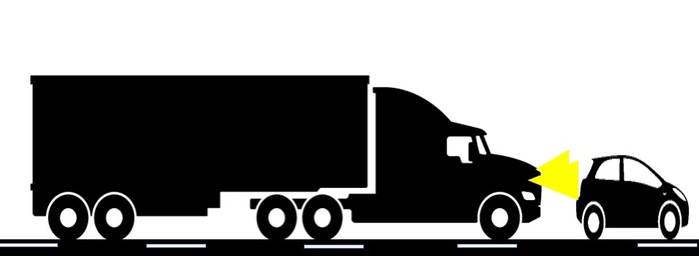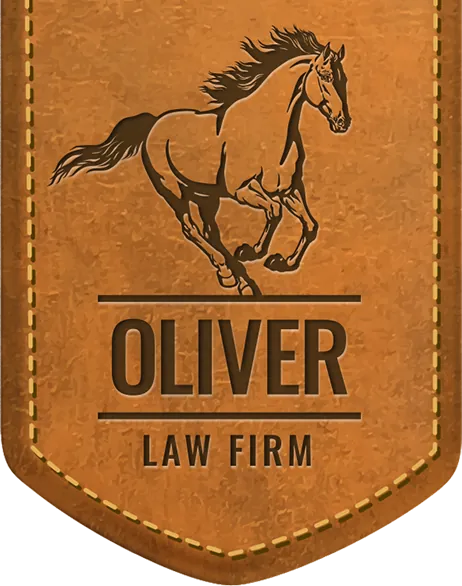
The definition of vehicle tailgating is when a driver follows the car in front too closely, literally riding up on its tail. A driver tailgating another vehicle, significantly decreases their amount of time to react. Needless rear-ending wrecks happen when the driver loses control or slams into the rear of the vehicle it has been tailgating. Rear-ending another vehicle can cause significant injury or damage at 10 mph or 70 mph.
Imagine if an 18-wheeler is tailgating your vehicle. The general rule of thumb is for every 10 mph the big rig travels, the truck driver needs to add their trucks’ length in following distance. For example, when an 18-wheeler is driving at 50 mph, 5 trucks’ lengths between the big rig and the vehicle in front of them should provide a safe stopping distance. But, drivers of 18-wheelers must learn how to constantly monitor the “space cushion” around their trucks. This includes when the big-rig is stopped, motionless or moving. The “space cushion” is the space between the truck and other traffic. This is critical at all speeds to allow enough space and time in order to stop or react quickly to approaching dangers.
Outside factors affect the safe “space cushion” of the tractor trailer. Influencing a safe stop include the speed of the 18-wheeler, tire quality, terrain, traffic settings, construction and weather conditions. Aging equipment is a major factor; failing brake systems. During the 2018 Brake Safety Week, the Commercial Vehicle Safety Alliance (CVSA) worked with law enforcement and conducted more than 35,000 commercial vehicle inspections throughout the U.S. Over 5,000 of those inspected where taken out of service. Of the 5,000 taken out of service, 45% represented out-of-adjustment brakes and other brake system abuses.
Terrain may cause unintentional tailgating. Many big rig drivers max their speed going downhill to reduce the speed loss experienced when they begin going uphill. This increased speed could force the big rig driver into an unwanted tailgating situation when another slower vehicle moves into the path of the rig.
Circumstances are an unpredictable element of tailgating. At 70 mph, an 18-wheeler following a vehicle at 15 feet, is not reasonable or sensible. But, traveling at 10 mph, a distance of 15 feet could be considered practical. Weather is the most unpredictable circumstance that factors into a reasonable stopping distance. Rain, sleet, snow or icy roads greatly alter the distance required for stopping.
Rear-ending, losing control of an 18-wheeler or jack-knifing a big rig are hazards for the big-rig driver tailgating a vehicle. But, the driver of the vehicle being tailgated can feel threatened, intimidated and annoyed thus causing distracted driving. According to the National Highway Transportation Safety Administration (NHTSA), there are 4 types of driver distractions: Visual – looking at something other than the road. Cognitive – a distraction taking your mind off the road. Auditory – hearing something not related to driving. Manual – manipulating something other than the steering wheel. The driver of a vehicle being tailgated is visually and cognitively distracted by the reflection of a tailgating 18-wheeler seen in their rearview mirror.
Tailgating in any vehicle is never a good idea. Tractor trailer drivers should practice maintaining their suitable “space cushion” to allow enough safe stopping time.
If you’ve been involved in an 18-wheeler accident, call us – (479) 202-5200. Our team of lawyers and legal professionals is well-versed in complex litigation resulting from 18-wheeler wreck injuries. We know what to look for in determining fault and have the skills to hold those responsible accountable for damages.
a Free Consultation



